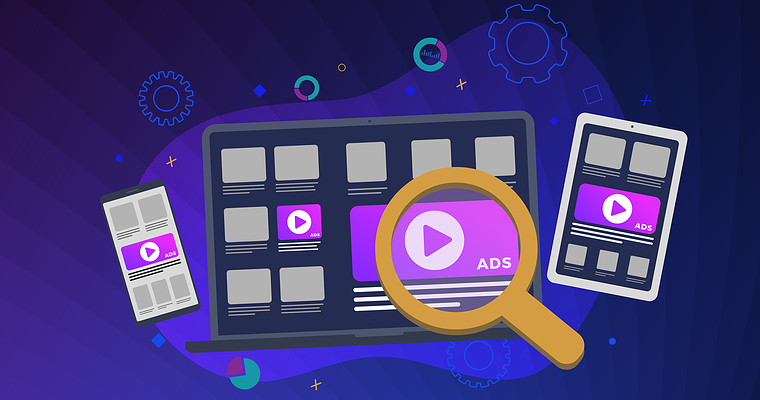

Google Debuts Upgrades To Its Enterprise 360 Suite Tools
source link: https://www.searchenginejournal.com/google-debuts-upgrades-to-its-enterprise-360-suite-tools/452356/
Go to the source link to view the article. You can view the picture content, updated content and better typesetting reading experience. If the link is broken, please click the button below to view the snapshot at that time.

Two More DSPs Remove Google Open Bidding
Google Open Bidding continues to fall out of favor with demand-side platforms (DSPs)
-
SHARES
-
READS

The programmatic arms race against Google continues.
Two additional demand-side platforms (DSPs) have removed Google Open Bidding supply for advertisers.
Yahoo and Amobee followed suit of The Trade Desk, the first to initiate the deprecation of Google Open Bidding from its platform in February.
So, what exactly does this mean for advertisers? Let’s dive into the motivations and implications of these decisions.
Why Remove Google Open Bidding?
While some may be quick to believe that removing Open Bidding is a direct blow to Google, experts say that may not be the case.
DSPs have multiple motivations to remove Google Open Bidding on their platform. These include (but are not limited to):
Top Freelancers for Every Business
Fiverr Business gives your team the flexibility to expand in-house capabilities and execute every project by connecting with vetted freelancers for every skill set you need.
- Google serving redundant impressions
- Open Bidding charges a 5% fee for this service
- Continued scrutiny of Google from the U.S. and European regulators
In short, the motivations here are money and reputation.
DSPs such as Yahoo and Amobee are looking to reduce inefficiencies that reduce profitability.
In February, ad-tech firm Jounce Media reported that almost 13% of all programmatic bid requests are initiated by Open Bidding and Google Ads and DV360 (Google’s platform).
With that type of influence on bid requests, there’s a duplication of bids.
What happens with duplicate bids? I think we all know the answer: higher costs for everyone.
On the topic of deduplication, Chris Kane, founder of Jounce Media, states, “And if you are deduplicating, removing Open Bidding is by far the easiest and most natural first choice.”
What This Means For The Industry
Three large DSPs have removed the supply of Google Open Bidding, which could lead to other DSPs following suit.
These moves also show that the tech industry is reducing its reliance on Google to produce revenue.
The programmatic ecosystem is growing. By removing one of the most prominent players in ad supply buying, DSPs can spend more time and money optimizing the digital supply chain.
So, what can this mean specifically for advertisers?
As DSPs diversify the available ad supply, the visibility of your ads may expand in the future. The more diverse inventory, the wider net you can cast in getting your message out.
Additionally, with the removal of Google Open Bidding, you may see a slight decrease in CPMs or CPCs. That means your advertising dollars go further, and you can reach more of your target audience than before.
Summary
While Google is a force to be reckoned with, ad-tech is coming at them with a vengeance.
The Trade Desk, Yahoo, and Amobee are among the first to remove Google Open Bidding from their supply. Others will likely follow the trend.
With the decline of Open Bidding, advertisers may see new, additional inventory opportunities for programmatic advertising.
Featured Image: ASTA Concept/Shutterstock
Subscribe to SEJ
Get our daily newsletter from SEJ's Founder Loren Baker about the latest news in the industry!
Brooke Osmundson
Brooke serves as the Leader of Digital Marketing at Smith Micro Software, with over 9 years of experience. She helps ... [Read full bio]
- Suggested Articles
-
SHARES
-
READS

If you’re an enterprise-level marketer, it can be tough to operate and scale ad campaigns.
You’ve also likely heard, and maybe are even using, Google’s enterprise suite of tools like Display & Video 360 (DV360) and Campaign Manager 360.
Google announced during its annual Google Marketing Live Summit that it’s enhancing the platforms to enable you for a privacy-first future, while growing your business through new ad formats.
Eduardo Indacochea, Sr. Director, Product Management of Google, kicked off this session to discuss the importance of these tools for enterprise marketers.
With 39% of advertisers expecting an increase in their programmatic spend in the next 12 months, these solutions provide a better experience for both consumers and advertisers.
Indacochea laid out the plan for the 360 Suite tools:
- New form of ads for Connected TV (CTV)
- Machine learning and automation updates
- New privacy-safe signals
Let’s dig into the details of the three-tiered plan from Google.
New Ad Formats
Chaoyi Chen, Global Product Lead, DV360 Platform Strategy for Google, broke down the three key areas of expansion for DV360. They include:
- Audio ad updates
- Connected TV
- Unified tools
Audio Ads
Podcasting has become all the rage in the past few years. Because of this, Google will soon be launching podcast targeting on YouTube and partner inventory.
Another update coming to audio ads is the expansion of targeting. More podcast genres and inventory will soon be available on Display & Video 360.
Connected TV
Chen reinforced just how many people are turning to YouTube for a connected TV experience. In fact, YouTube reached 135 million users in December of 2021.
More broadcasts and publishers will be joining the DV360 inventory in the future. Peacock is the latest publisher to be added to the inventory.
With DV360 reaching 93% of ad-supported CTV households in the United States, Google is extending its Google audiences to Connected TV devices. Additionally, demographic segments will be available to the platform by end of Q2 2022.
Unified Reporting Tools
Google understands the importance of identifying performance across YouTube versus other linear networks. That’s why Google is launching a new co-viewing planning and measurement tool.
Currently, this tool is in beta for certain customers. The broad rollout to additional advertisers will come this fall of 2022.
You’ll now be able to effectively manage all your publisher deals in one place. You have the ability to create one deal and distribute impressions across different accounts and publishers.
Lastly, you can control and manage your brand safety in Campaign Manager 360.
“Buying TV ads should be as easy as watching TV”, Chen states. These updates will help simplify your planning and management of publisher deals.
Machine Learning Updates
Being able to combine automation with customization is the ultimate key to success with Google.
Google announced its latest custom bidding signals you can choose from, such as player size and audibility. Additional bidding signals help you customize and maximize your ROI based on your business goals.
With the move from Universal Analytics to Google Analytics 4 properties, your GA4 properties can now be activated in Display & Video 360 immediately.
Privacy-Safe Signals
Google has prepared us for the deprecation of third-party cookies. It seems Google has taken advertiser feedback into consideration while making these enhancements.
If you’re currently using interest-based advertising options from Google, these will now incorporate topics from its new API sandbox coming soon.
The biggest update comes in the form of EPIDs: Exchange Provided Identifiers. These IDs are shared by exchanges or publishers with DV360. They are scoped on a domain or app-basis. The EPIDs will then be used to build segments for advertisers to use.
The last update for privacy-safe signals is the ability to match first-party data for marketing use. Google will allow a direct relationship between the advertiser and publisher to share data.
It’s important to note that no personal identifiable information (PII) will ever be shared between the two. All data will be encrypted, making user identity safe and advertisers still have the ability to reach its target audience.
Summary
We live in a fast-paced world. That’s not changing.
Now is the time to explore more advertising environments, especially if you’re in the enterprise space.
By utilizing DV360 and Campaign Manager 360, you can streamline your planning, process, and management of campaigns. This saves you time, efficiency, and money.
New ad formats will make it easier than ever to test out reaching your target audience in places you haven’t before. More importantly, DV360 will make it easier to scale and monetize your performance.
Source: Google Marketing Live
Featured Image: BestForBest/Shutterstock
Recommend
-
 6
6
Google integrates its collaboration tools within G Suite to boost productivity ...
-
 6
6
Wyze’s new pan & tilt cam adds color night vision Speedier and with a siren, too, this budget camera offers non-budget specs ...
-
 5
5
Material You upgrades its dynamic colors in Android 13 DP2 By Ara Wagoner Published 21 hours ago Go bright and vibra...
-
 10
10
Google introduces major upgrades to its Vertex AI platform
-
 1
1
Samsung debuts its smallest 200-megapixel smartphone sensor yetSteve Dent·Contributing Reporter...
-
 6
6
Lucid debuts its performance EV brand with the $249,000 Air SapphireJon Fingas·ReporterSa...
-
 10
10
Ludo upgrades its generative AI tools for game creativity December 1, 2022 ...
-
 5
5
Google Cloud debuts new retail AI tools ahead of NRF 2023
-
 3
3
Snap opens up its AR tools to retailers and enterprise businesses
-
 9
9
News Darwinium upgrades its payment fraud protection platform The vendor has upgr...
About Joyk
Aggregate valuable and interesting links.
Joyk means Joy of geeK
